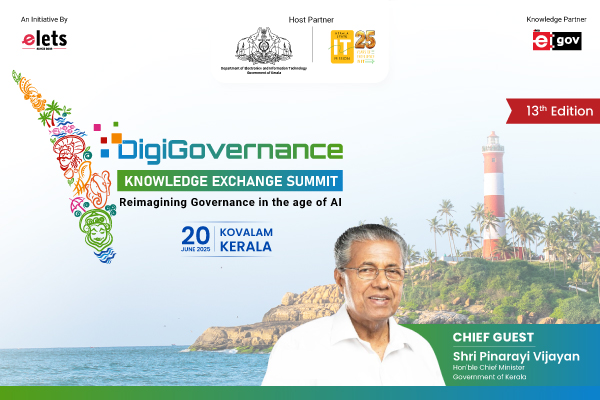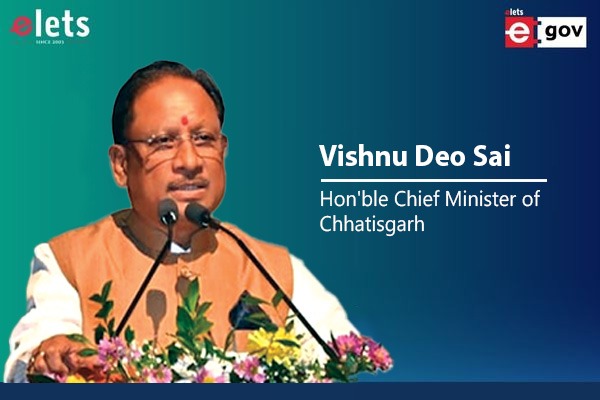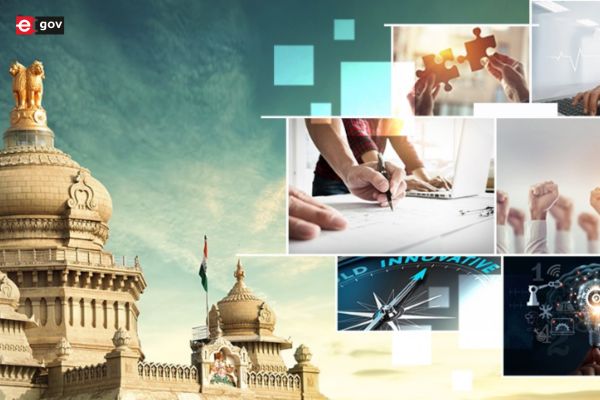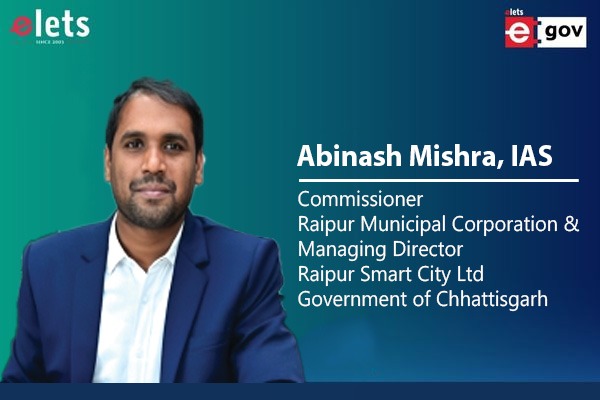 Open Source is a vital part of Sun Microsystems’s strategy. For Sun, standards and standardisation is an important market development activity. Sun believes that to standardise is to try for interoperability with standard specifications. Susy Struble, Corporate Standard Management, Sun Microsystems, US, discusses these and other issues on standards and open source, in a conversation with Ravi Gupta, Editor-in-Chief, egov
Open Source is a vital part of Sun Microsystems’s strategy. For Sun, standards and standardisation is an important market development activity. Sun believes that to standardise is to try for interoperability with standard specifications. Susy Struble, Corporate Standard Management, Sun Microsystems, US, discusses these and other issues on standards and open source, in a conversation with Ravi Gupta, Editor-in-Chief, egov
How is Sun positioned in relation with others, like the Linux or IBM initiatives?
First of all, I will tell you about what I do. I work in the office of the CTO (Chief Technology Officer), which focuses on research and development that will pave the way for our company and customers success. We have a very future oriented focus — 3-5 year and often even further. We are not associated with the product lines, but a big part of my work is to go and consult with the different product lines, mainly software, on where they should be investing in IT standards. So, for us, standards and standardisation is an important market development activity.

So, basically, one of the things that we learnt working in the product lines is that it was almost impossible for them to make consistent and intelligent business plans around what types of standards they would need to adopt to survive and thrive in the market. We came to realise that one of the big issues that we were facing, as an industry, is that the global standardisation system is broken. It can no longer be relied upon to deliver interoperable, harmonious standards that are global in scope and free of patents. In most of the standardisation organisations — ISO, ITU, IEC, and so on — the Intellectual Proprietary (IP) policy simply states that if you make a technical contribution, you only have to promise reasonable or non-discriminatory licensing for any patents that are included in that contribution, and that’s all.

The licensing terms of truly open standards must not preclude implementations of that standard under open source licensing terms or have any restrictive licensing terms. Faithful implementations of the standard must interoperate. We believe with open standards you get a large-scale interoperability, innovation, more flexibility, more choice and control, greater access to information, and so on- the more sustainable IT eco-systems.

Tell us something about Open Document Format (ODF) initiative of Sun?

ODF is a fantastic initiative of Sun. ODF allows text, spreadsheet and presentation files to work with one another even if they were created with different vendors’ applications. It improves data interoperability while expanding consumer choice. As long as your application adheres to the ODF standard — which is completely free, and which anyone can get involved in and help create the next version — it will completely interoperate with other ODF compliant applications, even if those applications are web-based, or PDA-based, or from competing vendors.
ODF addresses the concern that as documents and services are migrated from paper to electronic form, governments and other public agencies may not be able to read important documents if they are not all using a common file format. Return on government investment in IT is greatly improved by the ability to reuse information and services based on open standards like ODF.
What brings you to India?
One reason of coming to India is just to understand what do the academics, the businesses and the Government of India think about IT interoperability and standardisation, which is important for building of the software industry here in India and also important for consumers to fully benefit from IT. The main reason is to learn and to understand India’s position and understand why they’re not participating much in international IT standards. I’d like to better understand how organisations that pay attention to standards are linked together in India and how they work with the outside world, and I’d like to see if there’s a helpful role Sun could play in helping India to engage in IT standards creation.
What is your perception regarding why India is not participating much in creating standards? What is that segment that needs to be sensitised for this? Please tell us from your experience of other countries?

Scott G. McNealy, Chairman of the Board
My personal experience is mainly from the United States and China. And Sun has worked for the past five years in getting China working in international standards. This wasn’t terribly difficult, as the Chinese government has for some time believed that IT standards were key to international market engagement. China certainly has a very different style of government, but all governments — including democracies like India — take action to help industries they want to nurture and take action to help consumers. So many of countries do it differently, but I think success requires focused collaboration between the academia, the government and the private sector. It requires research on understanding where India is feeling most pain from a lack of interoperability. It requires technical training and a belief that engaging in IT standards builds business.
Indian standards are probably some of the best in let’s say the electrical goods created, or let’s say the pollution standards — the automobile exhaust standards. So all of those are some of the best in the world. When you come down to IT sector, the structured approach is not there. However, we see a little activity here and there, but we don’t see much of a focus or much collaboration between private enterprise, academics and the government. There are single- person or company efforts, the bunch of single persons who are trying to push in, or people who have got linkages with the US universities are pushing in.
The efforts have started kicking in India. Standardisation is a key component in the National e-Governance Plan (NeGP).India has the best engineers and some of the highly CMM qualified equipments. The standardisation industry needs that input.
What has been your China experience?
China has, for some decades, a quite focused effort in building the IT sector. Building up the IT industry has been an economic driver. They do have a better advantage than India as they do have a hungry domestic market for IT. As part of that, some three decades ago, China embarked on some very focused efforts like creating scientific IT parks, focusing on getting the academia to work together to address national economic and technical problems and also involving those people in considering how standards are to be created, how systems are to be put together and integrated. One thing that China really has done well is to tie some of the academic focus with the government projects on system integration and what are the interfaces that should be standardised. China very well understands that standardisation can be the key language in the international trade and relations. They’ve been pretty active in the WTO Technical Barriers to Trade group in raising issues of patents in international standards. We believe that a big reason behind their WAPI introduction was the patent problems they encountered with WIFI.
India is mostly a user of standards, there is not much product development itself happening. In that scenario, why standardisation is so important?
I would say two things — one, as a user of standards you want to make sure certain of the interoperability quality of what you’re getting, and secondly, the cost and consumer choice. If you, being a user, demand that vendors sell you products based on open standards, you can be guaranteed of a few things. First, it’s much more likely that there will be a flourishing market of competing products based on that standard. If no one controls it and its free, open to all to get engaged in and build products too, there will be a lot of products out there, and one is more likely to have the features you need. Competition drives the prices down and innovation up. You’ll also be able to switch products without losing interoperability, meaning you can choose to use another ODFcompliant office software product and still read your documents. There is a third angle to standards. India needs to have control to keep the door open, and that’s where things like ODF have such a huge importance. Because, tomorrow let’s say, as part of some international initiatives, a company that owns patents and technologies for a key but simple word processing technology suddenly decides to abandon it in its products? Or, makes a technical change to it that means you have to buy their new product in order to read your old documents? You’re stranded. You have a dangerous dependency. But if there was an open standard for saving and exchanging word processor documents — exactly what ODF is — CDAC or NIC or NIIT could come out with a software which can open those documents, can read them, and life goes on as normal.
One of the criticisms of open documents is that it is not easy to implement from a user perspective. How far these are tools for the common man?
For readers understanding, I want to point out that there is a difference between open source and open standards. Open source is about implementations in code; open standards are about the rules that code should follow for interoperability in a particular function. Both are about building community, however, and sharing and participating.
Open standards are not so difficult. If you use the Internet, you are already using the whole slew of open standards. Think of all the hundreds of tools we have for web authoring, all the choices of email clients we have, some of these are open source and free, some aren’t, but the choices are seemingly limitless… and then think about how little choice we have in office productivity suites. Hopefully ODF can change this. Remember the effect that truly open standards have on the market — anyone can implement them, so supporting products pop up quickly.
We are not saying you to move from non-open source to open source just because it is fashionable, we are saying that you move because in the long-term perspective it is much more beneficial. In the long term — the strategic, economic benefits as well as human resource benefits are much more with using the open-source. And that is why, in other countries, the government has taken a stand, and is seeing interoperability and the standards that they support as the key for the economic policy.
What are the key drivers pushing the open-source movement?
I think it is the realisation that IT is really a utility, and it is becoming ubiquitous. In most parts of countries in the world IT is so integrated into business and more and more into our daily lives. We need to have access to the things that make this all work. We, the consumers, want to be able to look “under the hood”, so to speak; we want control and the ability to make changes, if we so choose. Another angle in the open source movement is that it is backed by the philosophy that we can network together and share information. It is amazing because it was initially against the proprietary systems, and it was to show that there is a way to doing the same thing with a very different model — model of sharing and collaboration.
Which are the countries in the world where you see the key actions taking place in terms of open standards?
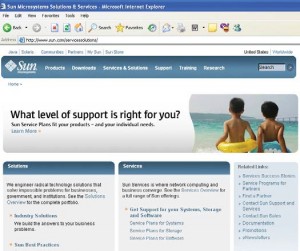 I would say Brazil, East Asia in general, and China. In the US, key actions are taking place in the healthcare IT. In the US, there is appalling lack of harmonisation of IT standards, and agreements upon formats, in the area of health care IT. In Brazil, there is a progressive thinking — IT for the public services through open source. Brazil has a lot of supportive policies to make the software projects interested in interoperability.
I would say Brazil, East Asia in general, and China. In the US, key actions are taking place in the healthcare IT. In the US, there is appalling lack of harmonisation of IT standards, and agreements upon formats, in the area of health care IT. In Brazil, there is a progressive thinking — IT for the public services through open source. Brazil has a lot of supportive policies to make the software projects interested in interoperability.
The open source initiatives — Red Hat, ODF, IBM — are happening in isolation. Can we think of an umbrella under which the initiatives can take place?
I don’t actually believe that the open source initiatives are necessarily taking place in isolation. For Sun’s open source communities, we provide the umbrella, which includes help for the open source Open Office project that supports the ODF standard. ODF itself is managed by the OASIS standards organisation, which is completely open to participation from anyone. What could be helpful is the Indian government giving recommendations on particular “packages” to use, which is what I believe is the intent of the e-Government standards efforts. The government will come out with a set of recommended IT standards for a particular e-Government function and might also even recommend open source implementations of these standards.
Be a part of Elets Collaborative Initiatives. Join Us for Upcoming Events and explore business opportunities. Like us on Facebook , connect with us on LinkedIn and follow us on Twitter, Instagram.
"Exciting news! Elets technomedia is now on WhatsApp Channels Subscribe today by clicking the link and stay updated with the latest insights!" Click here!




